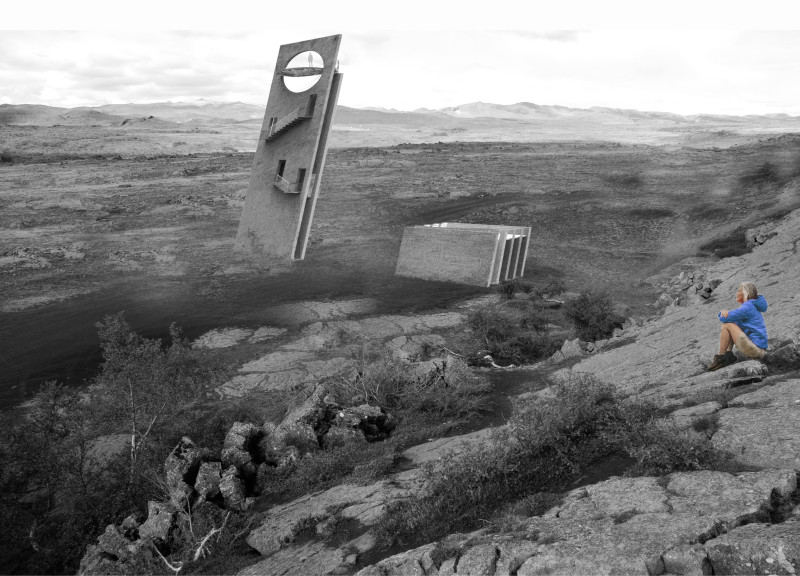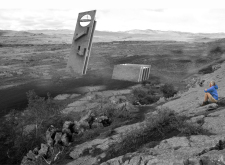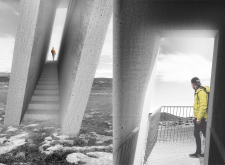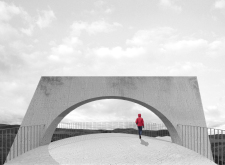5 key facts about this project
The project features an architectural design that embodies a seamless integration with its rugged natural surroundings, characterized by geometric forms and a focus on experiential engagement. Situated in an area with pronounced geological features, the design highlights the relationship between built structures and the existing landscape.
The primary function of this architecture is to serve as a visitor center and observation tower. These structures are designed to facilitate exploration and contemplation of the surrounding environment, providing spaces for both social interaction and individual reflection. The layout incorporates open areas for gatherings while prominently featuring paths and platforms that promote a continuous connection to the landscape.
Architecturally, the project prioritizes a dialogue between the interior and exterior environments. Large openings and specific vantage points have been incorporated to frame views of the landscape, elevating the experience of visitors. The use of reinforced concrete as a primary material underscores the durability and strength of the structures while allowing them to blend with the earthy tones of the terrain. The texture of the concrete enhances tactile interaction while contributing to the architectural aesthetic.
Unique Design Approaches
This project stands out due to its thoughtful consideration of duality in architectural form. The interaction between open and enclosed spaces exhibits a balance that encourages users to engage with their surroundings in varied ways. The emphasis on circulation paths leads visitors through a journey that contrasts compression within hallways with the expansive views offered at observation points.
Another distinct aspect of the design is the use of light and shadow. Geometric cutouts and overhangs have been strategically positioned to guide natural light into interior spaces, activating them throughout different times of the day. This intentional design approach fosters a dynamic relationship between the structures and their environment, enhancing the sensory experience for users.
Spatial Experience and Materiality
The spatial arrangement is characterized by an interplay of levels that allows for gradual transitions between indoor and outdoor settings. The staircase and ramps serve not only as functional elements but also as opportunities for visual engagement with the landscape. Each level offers a new perspective, reinforcing the architectural narrative of exploration.
Materiality plays a crucial role in the overall design philosophy. The use of reinforced concrete provides structural integrity while allowing for creative forms that echo the shapes found in the natural environment. Steel components, particularly in railings and structural support, add contemporary detailing without detracting from the primary material’s aesthetic.
For a more comprehensive understanding of this architectural project, readers are encouraged to explore the architectural plans and sections that provide detailed insights into its design and functional aspects. Additionally, reviewing the architectural ideas presented can enhance appreciation for the thoughtful integration of nature with human constructs.


























